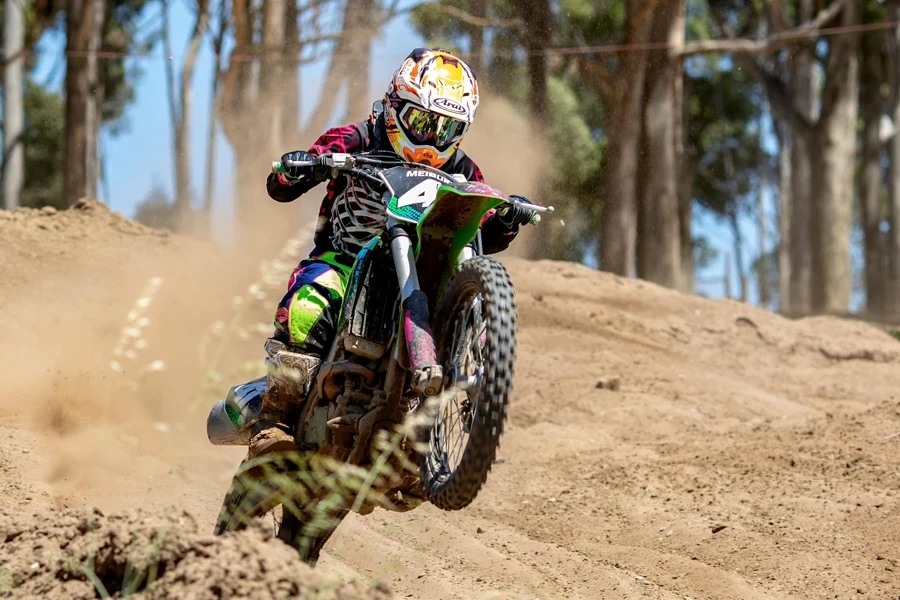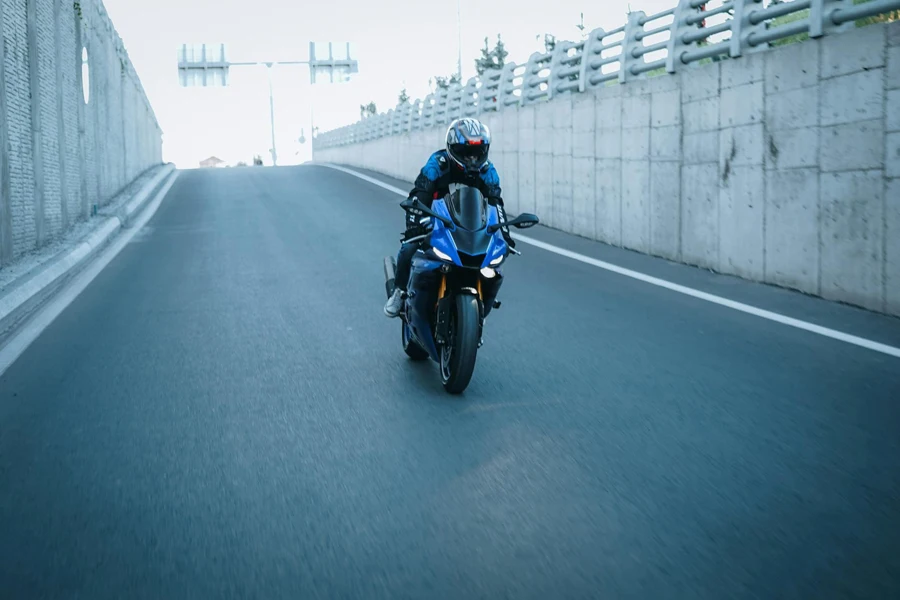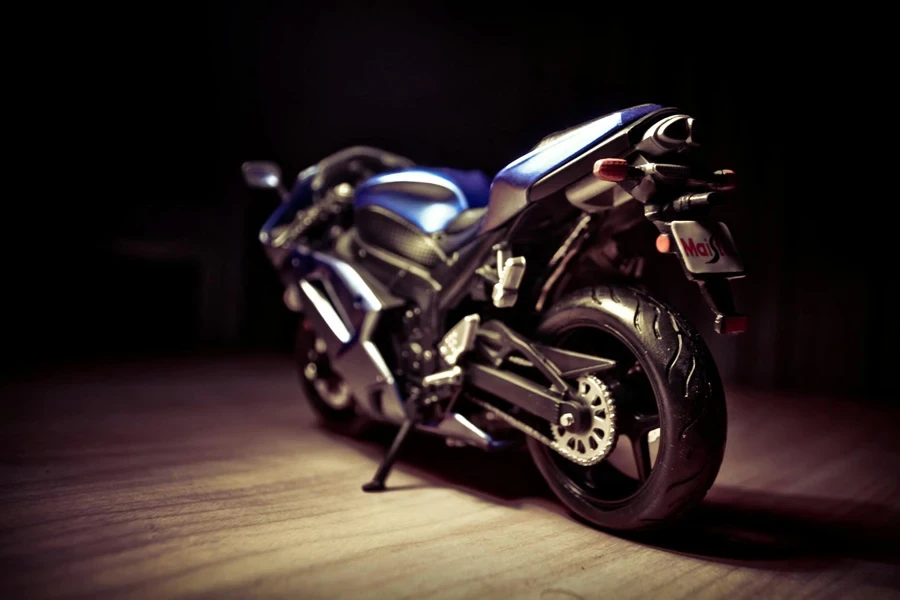Table of Contents
● Introduction
● Market overview
● Things to consider when selecting sport bikes
● Top sport bike models and their features
● Conclusion

Introduction
Sport bikes are the epitome of speed and performance, providing an exhilarating ride for enthusiasts who seek high-speed thrills and precise handling. This article explores the latest market trends and offers essential tips for selecting the best sport bikes, focusing on key factors such as engine specifications, advanced electronics, aerodynamics and design, braking systems, and electric motor performance. Additionally, top models are reviewed to assist in making an informed choice. Whether an experienced rider looking for cutting-edge technology or a newcomer seeking a reliable entry-level bike, understanding these aspects will guide toward the perfect sport bike that matches individual needs and riding style. This comprehensive guide ensures that the riding experience is elevated with expert insights and detailed analysis, aiding in navigating the dynamic world of sport bikes with confidence.

Market overview
The sport bike market is experiencing significant growth, with the global motorcycle market size projected to increase from USD 129.83 billion in 2023 to USD 272.8 billion by 2031, at a compound annual growth rate (CAGR) of 8.6%, according to Skyquest. This growth is driven by rising disposable incomes, urbanization, and a growing interest in high-performance bikes. The sport bike segment, characterized by powerful engines and lightweight frames, is particularly popular among younger riders and those seeking high-speed thrills. Market segmentation shows a diverse range of options for consumers, with categories based on type, propulsion, and engine capacity. Sport bikes are available with internal combustion engines (ICE) and electric propulsion systems, catering to different preferences and environmental considerations. Engine capacities vary widely, from under 150cc for entry-level models to over 1000cc for superbikes. Regionally, the Asia-Pacific market leads in sales, driven by high demand in countries like India and China, where motorcycles are a primary mode of transportation, according to indian motorcycle orange county.
Key players in the market are continuously innovating to enhance performance, safety, and comfort. Advanced technologies such as anti-lock braking systems (ABS), traction control, and Bluetooth-enabled helmets are becoming standard features, contributing to the overall appeal of sport bikes, according to BMW motorcycles of burbank. This competitive landscape ensures that consumers have access to a wide variety of high-quality options tailored to their specific needs and preferences. With the rapid development of motorcycle technology and the increasing focus on electric models, the sport bike market is poised for continued expansion and innovation.

Things to consider when selecting sport bikes
Performance and power
Engine capacity, horsepower, and torque are critical factors that determine a sport bike’s speed and acceleration capabilities. Sport bikes are engineered for optimal performance, featuring advanced suspension systems and high-performing brakes. These elements ensure the bike can handle tight turns at high speeds and provide a thrilling riding experience. According to BMW motorcycles of burbank, advanced suspension systems keep the ride smooth even on bumpy roads, while high-performance brakes maintain control at high speeds. When evaluating performance, consider how these specifications align with your riding needs, whether for everyday use or high-speed adventures.
Design and aesthetics
Lightweight frame materials significantly enhance a sports bike’s aerodynamics and performance. The sleek, minimalist style not only reduces weight and drag but also gives the bike a modern, aggressive look. Aerodynamic designs are crucial for achieving high speeds and maintaining stability, especially during sharp turns. The aesthetic appeal of sport bikes, with their streamlined bodies and bold lines, reflects their high-performance capabilities and attracts riders who value both form and function.
Comfort and ergonomics
Sport bikes typically feature an aggressive riding position, with higher foot pegs and a forward-leaning stance designed to improve control and stability at high speeds. While this position enhances performance, it may not be comfortable for all riders, especially those with chronic pain or joint issues. Seat comfort and suspension systems also play crucial roles in overall ergonomics. Advanced suspension systems can help smooth out rough rides, but the firm seats common in sport bikes might not be ideal for long-distance travel. When selecting a sport bike, consider how its ergonomic features align with physical comfort and intended use.
Safety features
Safety is a paramount consideration when selecting a sport bike. Advanced braking systems, such as anti-lock braking systems (ABS), help maintain stability and prevent wheel lock-up during sudden stops. Traction control systems enhance safety by preventing wheel spin during acceleration, especially on slippery surfaces. Additionally, many modern sport bikes come equipped with advanced electronic aids that assist with stability and handling. These features collectively improve the rider’s control over the bike, particularly in challenging conditions, and are essential for enhancing overall safety and rider confidence.
Cost and value
Evaluating the cost of a sport bike against its features and long-term value is crucial. High-performance models often come with a higher price tag, but they offer advanced features, superior build quality, and enhanced performance. It’s important to consider the bike’s initial cost alongside its maintenance expenses, fuel efficiency, and potential resale value. Investing in a more expensive model with better features can be worthwhile if it provides a safer, more reliable, and enjoyable riding experience. Balancing budget with desired features and performance will help ensure that the chosen sport bike offers the best value for the investment.
User experience
The rider’s experience level and intended use of the sport bike are critical factors in the selection process. Beginners may prefer bikes with moderate power and more stability to build their skills safely, while experienced riders might seek high-powered models for competitive racing or spirited riding. Consider the bike’s ergonomics, ease of handling, and suitability for the rider’s typical use, whether it’s daily commuting, weekend adventures, or track racing. The right sport bike should match the rider’s skill level and provide an enjoyable and manageable riding experience, ensuring both safety and satisfaction.

Top sport bike models and their features
Engine specifications
High-capacity engines, typically 999cc or above, are essential for providing the superior speed and acceleration that define top sport bikes. These engines deliver impressive horsepower and torque, which are crucial for both competitive racing and high-speed road use. The powerful performance of these engines enables sport bikes to achieve rapid acceleration and maintain high speeds, making them ideal for thrill-seekers and performance enthusiasts. The performance capabilities of these engines play a pivotal role in the overall riding experience, offering both excitement and efficiency.
Advanced electronics
Modern sport bikes are equipped with advanced electronic systems that enhance performance and adaptability. Features such as multiple riding modes, traction control, wheelie control, and quick shifters allow riders to customize their riding experience and maintain control under various conditions. These technologies improve handling, stability, and safety, enabling riders to push the limits of their bikes while ensuring a secure and enjoyable ride. Advanced electronics are crucial for optimizing the performance of sport bikes, providing both precision and confidence in diverse riding scenarios.
Aerodynamics and design
Sport bikes prioritize aerodynamics and lightweight construction to enhance performance. Frames made from materials like carbon fiber or aluminum reduce overall weight, improving handling and agility. Aerodynamically optimized bodywork minimizes drag and increases stability at high speeds, allowing for smoother and more efficient rides. The sleek, minimalist design not only contributes to better performance but also adds to the visual appeal of the bike, making it both functional and attractive. These design elements work together to provide a high-performance riding experience that is both exhilarating and efficient.
Braking systems
High-performance braking systems are essential for the safety and control of sport bikes. These systems typically include advanced brake calipers and anti-lock braking systems (ABS), which prevent wheel lock-up during sudden stops and maintain stability. Additionally, multi-piston calipers and oversized, vented rotors are often used to enhance braking power and heat dissipation. These features ensure that sport bikes can decelerate rapidly and handle high-speed braking with precision, providing riders with the confidence to navigate challenging conditions and perform aggressive maneuvers safely.
Electric motor performance
Electric sport bikes are increasingly recognized for their powerful electric motors that deliver instant torque and smooth, rapid acceleration. These motors provide a quiet and eco-friendly alternative to traditional internal combustion engines, offering high performance without emissions. The immediate torque available from electric motors enhances responsiveness, making these bikes exceptionally agile and quick off the line. Advanced battery technology supports sustained high performance and extended range, ensuring that electric sport bikes can compete with their traditional counterparts while promoting sustainability and efficiency.
Battery life and range
One of the critical factors for electric sport bikes is their battery life and range. Long-lasting batteries and substantial range on a single charge are essential for practical use. According to skyquest, advancements in battery technology ensure that riders can enjoy extended riding sessions without frequent recharging. This combination of powerful electric motors and efficient batteries makes electric sport bikes a viable option for performance enthusiasts seeking sustainability.

Conclusion
Sport bikes offer a unique blend of speed, agility, and modern design, making them an exciting choice for both seasoned riders and newcomers. Understanding key features such as engine specifications, advanced electronics, aerodynamics, braking systems, and electric motor performance is essential for making informed decisions that suit specific needs and preferences. The dynamic market for sport bikes includes a wide range of models, from high-performance machines to budget-friendly and electric options, each designed to deliver a thrilling riding experience. Exploring these top models and staying informed about market trends will help in finding the perfect sport bike that matches any riding style and enhances the overall experience. With the right knowledge, navigating the world of sport bikes becomes easier, leading to a choice that offers both excitement and reliability.




